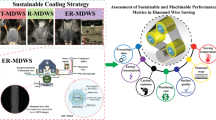Abstract
The purpose of this study was to achieve improved process understanding of fluid bed granulation using in-line particle size analyzer in conjunction with multivariate methods. The combined use of process analyzers and multivariate tools provides a useful means to drug development within the framework of quality by design utilizing process analytical technology. The evaluation of in-line monitoring manufacturability quality attributes, particle size, and particle size distribution, was conducted using the Parsum probe which is based on spatial filtering technique. Several granulation batches were manufactured and monitored using a commercial-scale fluid bed granulator. Reference measurements by offline Malvern MasterSizer showed good agreement with those by Parsum at end-of-spray phase. Multivariate/batch statistical process control methods were used to evaluate batch process performance, batch-to-batch variation and develop potential control strategy. The results indicated that the Parsum analyzer is a viable tool for in-line particle size characterization and improved process understanding in combination with multivariate tools.












Similar content being viewed by others
References
Närvänen T, Lipsanen T, Antikainen O, Räikkönen H, Heinämäki J, Yliruusi J. Gaining fluid bed process understanding by in-line particle size analysis. J Pharm Sci. 2009;98:1110–17.
Schmidt-Lehr S, Moritz H, Jürgens KC. Online control of particle size during fluidised bed granulation. Pharm Ind. 2007;69:478–84.
Rantanen J, Wikström H, Turner R, Taylor LS. Use of in-line near-infrared spectroscopy in combination with chemometrics for improved understanding of pharmaceutical processes. Anal Chem. 2005;77:556–63.
Frake P, Greenhalgh D, Grierson SM, Hempenstall JM, Rudd DR. Process control and end-point determination of a fluid bed granulation by application of near infra-red spectroscopy. Int J Pharm. 1997;151:75–80.
Goebel SG, Steffens KJ. Online-measurement of moisture and particle size in the fluidized-bed processing with the near-infrared-spectroscopy. Pharm Ind. 1998;60:889–95.
Nieuwmeyer FJS, Damen M, Gerich A, Rusmini F, Maarchalk KV, Vromans H. Granule characterization during fluid bed drying by development of a near-infrared method to determine water content and median granule size. Pharm Res. 2007;24:1854–61.
Rantanen J, Räsänen E, Tenhunen J, Känsäkoski M, Mannermaa JP, Yliruusi J. In-line moisture measurement during granulation with a four-wavelength near infrared sensor: an evaluation of particle size and binder effects. Eur J Pharm Biopharm. 2000;50:271–6.
Findlay WP, Peck GR, Morris KR. Determination of fluidized bed granulation end point using near-infrared spectroscopy and phenomenological analysis. J Pharm Sci. 2005;94:604–12.
Watano S, Miyanami K. Image processing for on-line monitoring of granule size distribution and shape in fluidized bed granulation. Powder Technol. 1995;83:55–60.
Watano S. Direct control of wet granulation processes by image processing system. Powder Technol. 2001;117:163–72.
Halstensen M, de Bakker P, Esbensen KH. Acoustic chemometric monitoring of fluidized bed granulation: part I. Powder Handl Proc. 2005;17:206–11.
Halstensen M, de Bakker P, Esbensen KH. Acoustic chemometric monitoring of an industrial granulation production process—aPAT feasibility study. Chemometr Intell Lab Syst. 2006;84:88–97.
Huang J, Ose S, de Silva S, Esbensen KH. Non-invasive monitoring of powder breakage during pneumatic transportation using acoustic chemometrics. Powder Technol. 2003;129:130–8.
Ruf A, Worlitschek J, Mazzotti M. Modeling and experimental analysis of PSD measurements through FBRM. Part Part Syst Char. 2000;17:167–79.
Petrak D. Simultaneous measurement of particle size and particle velocity by the spatial filtering technique. Part Part Syst Char. 2002;19:391–400.
Kougoulos E, Jones AG, Jennings KH, Wood-Kaczmar MW. Use of focused beam reflectance measurement (FBRM) and process video imaging (PVI) in a modified mixed suspension mixed product removal (MSMPR) cooling crystallizer. J Cryst Growth. 2005;273:529–34.
Barrett P, Smith B, Worlitschek J, Bracken V, O’Sullivan B, O’Grady D. A review of the use of process analytical technology for the understanding and optimization of production batch crystallization processes. Org Process Res Dev. 2005;9:348–55.
Hu X, Cunningham JC, Winstead D. Study growth kinetics in fluidised bed granulation with at-line FBRM. Int J Pharm. 2008;347:54–61.
Kourti T. Process analytical technology and multivariate statistical process control. Wellness index of process and product-Part 1. J Proc Anal Techn. 2004;1:13–9.
Kourti T. Process analytical technology and multivariate statistical process control. Index of wellness of product and process-Part 2. J Proc Anal Techn. 2005;2:24–8.
Kourti T. Process analytical technology and multivariate statistical process control. Index of wellness of product and process-Part 2. J Proc Anal Techn. 2006;3:18–24.
Kourti T. Multivariate dynamic data modelling for analysis and statistical process control of batch processes, start-ups and grade transitions. J Chemometr. 2003;17:93–109.
FDA. PAT—A framework for innovative pharmaceutical development, manufacturing and quality assurance; 2004
ICH harmonised tripartite guideline, pharmaceutical development q8, 2005
Mattila M, Saloheimo K, Koskinen K. Improving the robustness of particle size analysis by multivariate statistical process control. Part Part Syst Char. 2007;24:173–83.
Wold S, Kettaneh N, Friden H, Holmberg A. Modelling and diagnostics of batch processes and analogous kinetic experiments. Chemometr Intell Lab Syst. 1998;44:331–40.
Wold S, Geladi P, Esbensen K, Ohman J. Multi-way principal components and PLS analysis. J Chemometr. 1987;1:41–56.
Kresta JV, MacGregor JF, Marlin TE. Multivariate statistical monitoring of process operating performance. Can J Chem Eng. 1991;69:35–47.
Nomikos P, MacGregor JF. Multivariate SPC charts for monitoring batch processes. Technometrics. 1995;37:41–59.
Nomikos P, MacGregor JF. Multi-way partial least squares in monitoring batch processes. Chemometr Intell Lab. 1995;30:97–108.
Simca-P+. Multivariate data analysis software, Umetrics AB, NJ. 2008 v 12.0
Hoffmann AC, Romp EJ. Segregation in a fluidized powder of a continuous size distribution. Powder Technol. 1991;66:119–26.
Huilin L, Yurong H, Gidaspow D, Lidan Y, Yukun Q. Size segregation of binary mixture of solids in bubbling fluidized beds. Powder Technol. 2003;134:86–97.
Wormsbecker M, Adams A, Pugsley T, Winters C. Segregation by size difference in a conical fluidized bed of pharmaceutical granulate. Powder Technol. 2005;153:72–80.
Acknowledgment
The authors gratefully acknowledge Norbert Straub at Excella, Thirunellai Venkateshwaran, Chun Cai, Victor Wong, and Saly Romero-Torres at Wyeth for constructive discussions and strong support.
Author information
Authors and Affiliations
Corresponding author
Rights and permissions
About this article
Cite this article
Huang, J., Goolcharran, C., Utz, J. et al. A PAT Approach to Enhance Process Understanding of Fluid Bed Granulation Using In-line Particle Size Characterization and Multivariate Analysis. J Pharm Innov 5, 58–68 (2010). https://doi.org/10.1007/s12247-010-9079-x
Published:
Issue Date:
DOI: https://doi.org/10.1007/s12247-010-9079-x




